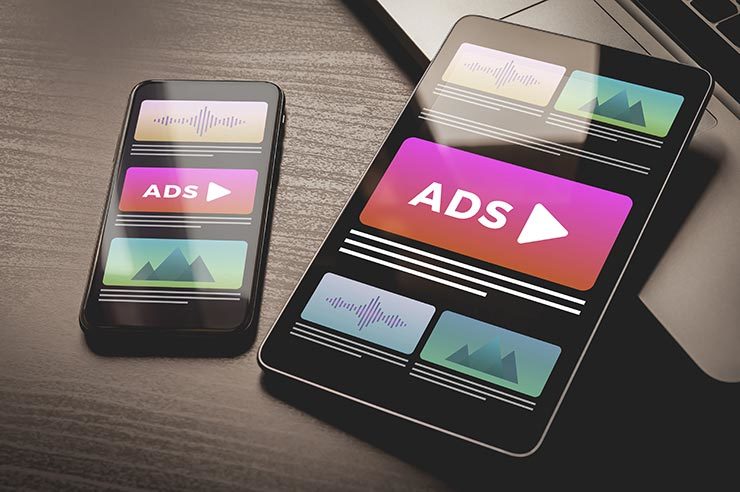Breaking Down the Different Types of Website Ads
Website advertisements, sometimes known as online display ads, can be used for two reasons: as an alternative income source from the presentation of content from non-competitive, third-party establishments; or as inbound marketing or directives to check out company-produced content such as sale items, eBooks, and more.
Whatever the reason for your website ads, know that the way you introduce or exhibit those ads has a lot to do with user experience and how visitors will perceive them. Want to implement advertisements for your business? Consider the following four website ads and the pros and cons of each.
1. Banner Ads
Pros
Banner ads are contained in a predefined area — generally in headers, footers, or sidebars. This makes them less obtrusive and often neater than other options. They also work best with more traditional layout styles.
Cons
They are easy to scroll past or ignore, therefore designers for third-party companies often resort to animation or other displeasing aesthetics to help make them more noticeable. Banner ads can also become awkward in more modern web designs such as parallax layouts.
2. Expandable Ads
Pros
Expandable ads are literally an offshoot of the banner ad, meaning they expand from a typical banner as a user hovers over the predefined area. This strategy can provide more information opportunities for an otherwise smaller ad area.
Cons
They may frustrate inexperienced users. Although expandable ads often feature an option to close the ad or decrease its size, many novice website users often miss this option and become frustrated when the ad overlaps valuable website content.
3. “Play Before” Ads
Pros
“Play before” ads are ideal for media-heavy websites or apps like YouTube or Pandora. They often allow businesses to offer a free service that’s paid for via mandatory ads that display before or in-between playable content. The ads often feature audio or video so they’re sometimes interactive, which can make them more engaging than static or even audio-free animated ads.
Cons
Impatient users become easily discouraged by them, especially when the same ads are replayed time and again between media clips. To avoid aggravation, consider varying the types of content and ad partners, as well as allowing users to skip the ad after a certain number of seconds.
4. Popup Ads
Pros
Popup ads generally display shortly after a user visits a webpage — such as a homepage or landing page — or after a user performs an action — such as filling out a form or signing up for a mailing list. Popup ads are direct and engaging. They often include a call-to-action, which inspires users to “take the next step:” e.g. buy, try, read, etc. They also provide a clear path to that next step.
Cons
Similar to expandable ads, popup ads are sometimes vexing. For one, inexperienced users can mistake them for the popup spam of yore that was once associated with computer viruses. Furthermore, if the ad isn’t coded properly, then some browsers may block it — which defeats its purpose altogether.
What Ad is Right for You?
Whatever your reason for advertising or the type of ad you choose, ultimately you’ll want to provide value to your audience. Note: It’s easier to do so when you’re working with inbound marketing since you control the content. When it comes to third-party ads, however, you’ll want to choose your partners — and their content — wisely.
A/B testing can be a great tool for gaining much-needed insight into the best ads for your target market — regardless of the ad type. Experiment with several styles of landing pages and marketing assets, and examine analytics, like click-through rates, to nail down the most outstanding ads for your business.
Need expert advice on implementing and testing your website ads? Give us a call today and find out how we can help with your overall website development and advertising options.
[DESCRIPTION]
